Making Cranberry Clementine Wine is our Christmas day tradition. Beautiful seasonal flavours come together for a Christmas wine to drink NEXT year!
Originally published December 28, 2011 , Updated on 10/13/20

I've mentioned our holiday home brewing tradition before. Rather than deal with crowds, traffic, people, and the kind of over-stimulation that drives us both nuts, we use holidays as a bit of quiet time at home, enjoying each others' company... while brewing up something tasty.
A few days before the holiday, my husband clears space in the brew room, while I design our recipe. For our Christmas day brew, we try to do something holiday themed, both to remind us of our "holiday", and so that the final wine will be something appropriately themed for future holiday consumption. You know, being labeled as "Christmas wine"!
That, and this wine goes particularly well with holiday roast dinners, with appetizer spreads, etc. It’s incredible as a seasonal wine!

The first year of this tradition was when we designed the recipe for Clementine Mead, which has since gone on to become a favorite not only with us, but with other homebrewers. Cheers, guys!
As I'd mentioned last Christmas, our 2010 Christmas Wine was a Cranberry Clementine Wine. Oh MAN, did it ever turn out amazing!
1 year to the day we brewed it, we were serving this up at a friend's "orphan's Christmas" Doctor Who marathon. (Having moved our traditional holiday brew day up 1 day to accommodate such a worthy event!).
This turns out a gorgeous light red, fruity wine, without any of the unpleasantness I associate with red wines in general (Tannins, the cigarette taste, etc). The clementine oranges work beautifully with the cranberries, and the result is a smooth, festive libation.
We really love the use of “Christmas Oranges” to flavor our holiday brews... and they certainly didn't disappoint in this recipe. Don't wait til next Christmas to put a batch of this on - those Clementines oranges are at peak season for another month or so!
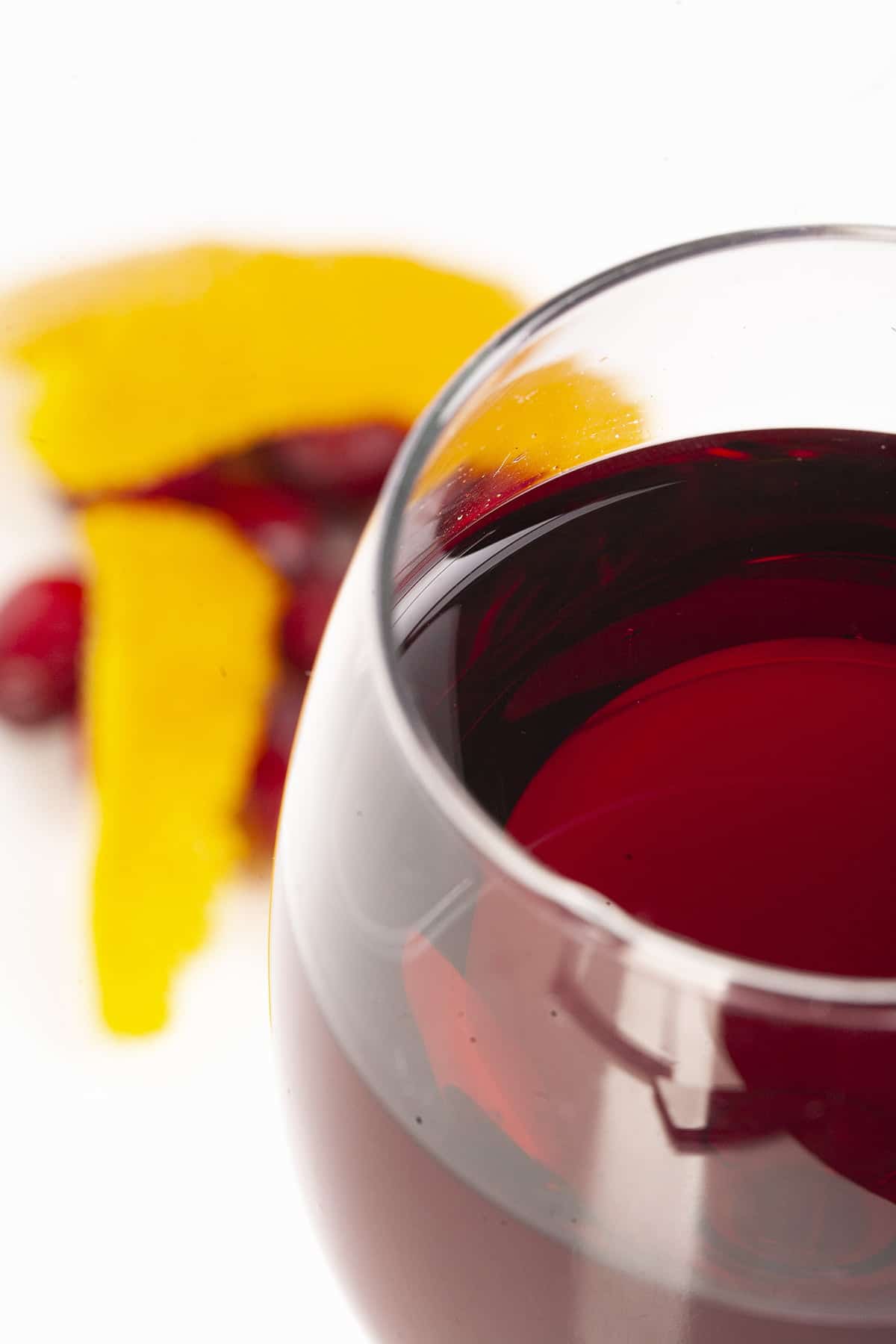
Getting Started with Wine Making
If you haven't attempted home brewing before, don't be intimidated, it’s not as complicated as you might think.
Basically, you get something - fruit and water or juice... some sugar, toss some yeast in it, and let it go!
Ok, it’s a bit more involved than that, but not by much! Check out our primer to home brewing:
- Wine Making At Home, Part 1: Why?
- Wine Making at Home, Part 2: Equipment to Get Started
- Wine Making at Home, Part 3: The Brewing Process.
- Wine Making at Home, Part 4: How to Stabilize and Back Sweeten Wine
Just a small handful of entries, and you'll be good to go!
Cranberry Clementine Wine Ingredients
Spring Water
When we first designed this recipe, we were living in Minneapolis. The tap water there was terrible, so we used jugs of spring water for all of our wine recipes.
It’s a convenient option for measuring, is sterile, and pretty much guarantees that you won’t get any weird flavours in your wine from the water.
If your tap water is consistently tasty and safe, you can definitely feel free to use that instead of bottled.

Cranberries
You can use fresh or frozen cranberries to make this wine, just be sure you’re using cranberries - and nothing but. Cans of cranberry sauce will NOT suffice!
Any kind of preservatives will prevent fermentation from happening; any sugars will affect the sugar levels (obviously)
Depending on what brand of cranberries you buy, you may end up with slightly more or slightly less cranberry weight. It’s all good - just go with what you have! For what it’s worth, though, I’d rather be on the “slightly more” side, myself.
Pick through your cranberries when you open the bags, getting rid of any bits that don’t belong, or cranberries that are mushy or have gone bad.
If you have a food processor, you can run the cranberries though for a few seconds to break them up a bit. You don’t want them to be a puree, just chopped enough that their juices and flavours will leech out into the water/sugar mixture easily.
A puree will make racking it a bit more difficult. Not impossible, just more effort and a bigger mess than is necessary!
Clementines
While the cranberries are something you can buy and use right away in this Cranberry Clementine Wine recipe, the clementines need a little more planning.
We use the peels of 20-30 clementine oranges. So, as we buy - and hoover - a couple cases of clementines early in the season, we save the peels.
If there’s an excess amount of pith left on the peels, I’ll quickly scrape a spoon over the inside of the peels to get rid of the extra pith, then bag it and toss it in the fridge.
If you’re someone who can easily go through 20-30 clementines, it’s fine for you to do the same. If it takes you a bit longer to collect that many orange peels, just toss them in the freezer until you have enough - it’s perfectly fine to just toss the frozen peels into the mix when making this wine.
Alternatively, you can just use regular orange peels. Most oranges work well with a vegetable peeler, and you’ll need fewer of them, given the size of clementines. If you’re using normal sized oranges, you can do 10-15 oranges worth of peel.

Granulated Sugar
We prefer to use granulated sugar for this, as the flavour is neutral enough to not cover up or weigh down the bright fruit flavour from the cranberries.
We don’t recommend using brown sugar or maple syrup for this, though you can swap out all or part of the granulated sugar for honey, if you’d like.
Back Sweetening Your Christmas Wine
Sometimes - especially depending on the type of yeast used - you’ll find that the yeast ends up fermenting the wine to be a bit more dry than you’d like... and that’s when you back sweeten it!
... and that’s when you back sweeten it! You can read my How to Stabilize and Back Sweeten Wine post for information on how to back sweeten it.

More Home Brewing Recipes!
While you've got your current homebrew fermenting away, why not consider putting a batch of something else on, to occupy your wait time? Here are a few of my other wine, cider, and mead recipes:
Wine Recipes
Banana Wine Recipe
Blackberry Wine Recipe
Blackcurrant Wine Recipe
Blueberry Wine Recipe
Cherry Wine Recipe
Cranberry Wine Recipe
Faux Lingonberry Wine
Lychee Wine Recipe
Mango Strawberry Wine Recipe
Mango Wine Recipe
Mint Wine Recipe
Lychee Wine Recipe
Partridgeberry Wine Recipe
Passionfruit Wine Recipe
Peach Wine Recipe
Stone Fruit Wine Recipe
Strawberry Wine Recipe
Ube Wine Recipe
Watermelon Wine Recipe
Mead Recipes
Black Cherry Mead Recipe
Blueberry-Clementine Mead Recipe
Blueberry Mead Recipe
Clementine Mead Recipe
Pumpkin Mead Recipe
Wildflower Mead Recipe
Cider & Miscellaneous Homebrew Recipes
Hard Apple Cider Recipe
Home Brew Hard Iced Tea Recipe
Maple Hard Apple Cider Recipe
Share the Love!
Before you drink up, be sure to take some pics of your handiwork! If you post it to Bluesky, be sure to tag us - @CelebrationGen. We're also on Pinterest, so you can save all your favourite recipes to a board!
Also, be sure to subscribe to my free monthly email newsletter, so you never miss out on any of my nonsense.
Well, the published nonsense, anyway!
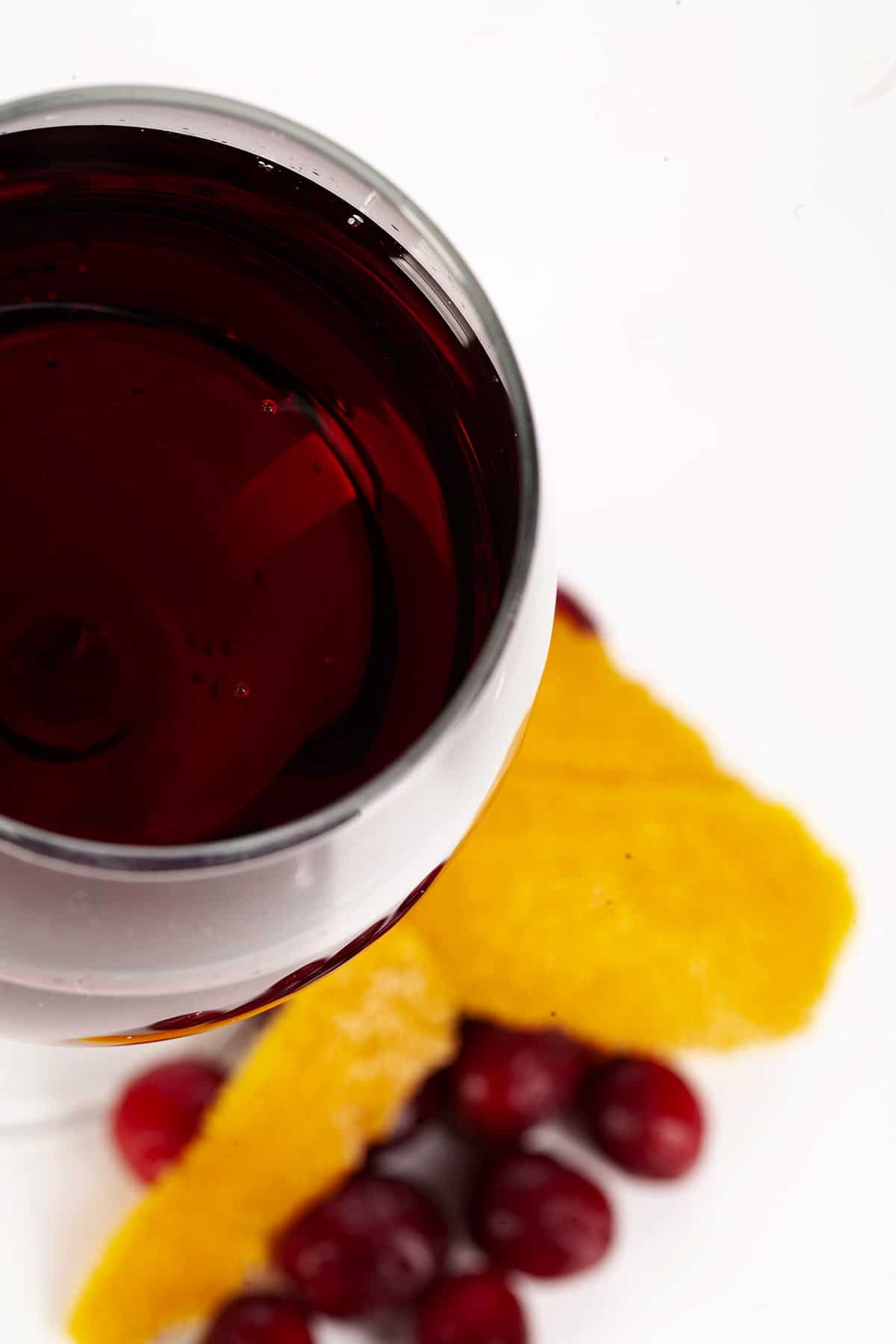
Now, on to that Cranberry Clementine Christmas Wine Recipe!
Cranberry-Clementine Christmas Wine
Equipment
- 7.5 gallon pot (or bigger)
- 1 6.5 gallon fermenter bucket and lid
- 1 or 2 6.5 gallon glass carboys
- 1 air lock and stopper
- Siphon, siphon tubing.
Ingredients
- 8 lbs fresh cranberries
- Peels from about 30 clementine oranges
- 5 gallons spring water
- 15 lbs white sugar
- 4 lbs golden raisins
- 2.5 teaspoon Acid blend
- 2 teaspoon pectic enzyme
- 6 teaspoon yeast nutrient
- 1 packet Red Star “Montrachet” yeast
- Potassium sorbate or other wine stabilizer
Instructions
- Chop cranberries, set aside
- In large stock pot – we used a 7.5 gallon turkey fryer – combine orange peels, water, and sugar. Heat to boiling, stirring until sugar is dissolved.
- Add chopped cranberries, stir and continue to cook for 5 minutes.
- Add acid blend, pectic enzyme, and yeast nutrient. Stir well, turn off heat. Cover with a lid, allow to cool to room temperature – overnight.
- Place raisins and yeast in a freshly sanitized 6.5 gallon fermenting bucket. Use sanitized equipment to rack the liquid out of the cooking pot, and into the fermenting bucket.
- Using sanitized equipment – take a gravity reading. Keep track of the number! (This is an optional step, but will allow you to calculate your final ABV %)
- If you’d like, use sanitized equipment to add some of the remaining cranberry-orange pulp to the fermenting bucket, if it will fit. (Totally optional!).
- Cover with sanitized lid and air lock. Within 48 hours, you should notice fermentation activity – bubbles in the airlock, carbonation and /or swirling in the wine must. This means you’re good to go!
- Let sit for about a week, stirring (sanitized paddle!) every couple of days or so.
- After a week or so, use your sanitized siphon setup to rack the must into a freshly sanitized 6.5 gallon carboy.
- Put the carboy somewhere cool (not cold!), and leave it alone for 2 months or so.
- Using sanitized equipment, rack the wine off the sediment, into a clean, freshly sanitized 6.5 gallon carboy. (At this point, we added 2 lbs sugar for added sweetness. Cap with sanitized airlock, leave it alone for another 2-3 months.
- Rack one more time, leave it for another 3 months or so.
- When your wine has been racked a few times and shows NO more fermenting activity for a month or so (no bubbles in the airlock, no more sediment being produced, you can move on to bottling.
- Follow the instructions on your selected type of wine stabilizer to stop fermentation. For potassium sorbate, this needs to be done 2-3 days before bottling.
- Using sanitized equipment, take a final gravity reading, then rack the wine into clean, sanitized bottles. Cork. (We like to use these for corking our homemade wine. Easy to use – no special equipment needed! – easy to uncork, and – should you have any wine left in your bottle after serving (pfft!), the “cork” is easily replaced for temporary storage!).
Notes
Nutrition
More Holiday Recipes
Looking for more inspiration for your holiday spread? Whether Thanksgiving, Christmas, Easter, or any of the other holidays, here's a few ideas for you!
Bacon Roasted Brussels Sprouts
Brandied Apple Upside Down Cake
Chicken Based Potato Sausage Recipe - Potatiskorv
Cranberry Wine
Maple Bourbon Glazed Carrots
Mushroom Brie Turnovers
Noelles
Orange Ginger Cranberry Sauce
Pumpkin Mead
Pumpkin Spice Nanaimo Bars
Savoury Mushroom Chestnut Stuffing
Southern Comfort Glazed Ham








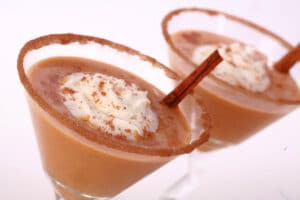
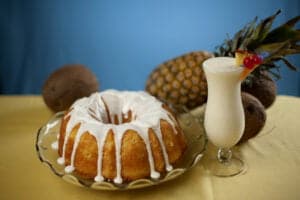
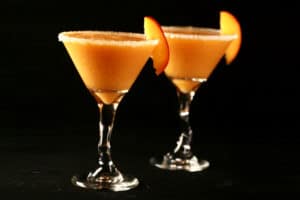
Skye
Hey there Marie, this recipe sounds delicious and I definitely want to give it a try. Just wanted to make sure I have one part correct in my understanding. Where I live in California, Cities are tangerines or Mandarin oranges. Are those the same as the Cuties in the recipe? I don't want one flavor to overpower the others. : ) Thanks.
Marie Porter
Brand name Cuties, Tangerines, or Mandarins will all work about the same!
Skye
Meant "Cuties" in California. : )
Skye
Thanks Marie. 🙂 I appreciate your reply. Please disregard my second post. My iPad is very slow. : )